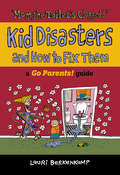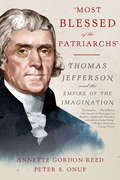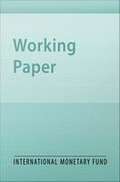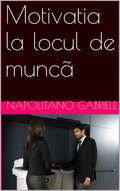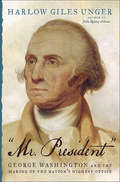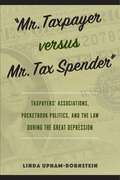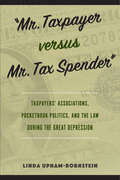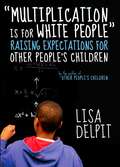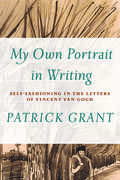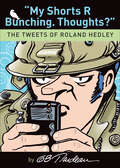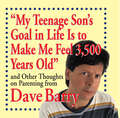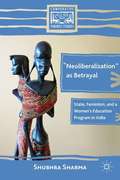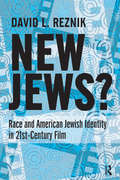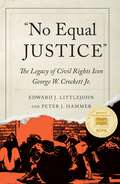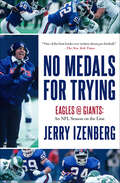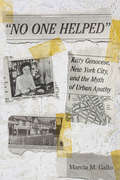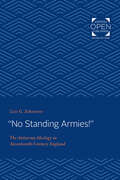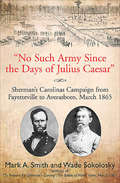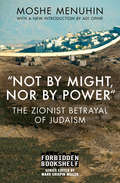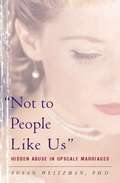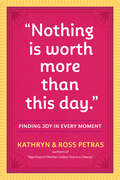- Table View
- List View
"Mom, The Toilet's Clogged!": Kid Disasters and How to Fix Them (A Go Parents! Guide®)
by Lauri BerkenkampIn a household with children, disasters lurk around every corner. Laundry soap in the dishwasher. Baseballs launched through the neighbor's window. Heads stuck between stair railings. Sandwiches in the VCR. What's a parent to do? "Mom, the Toilet's Clogged!" takes on common kid-induced household problems and provides hands-on, rational solutions that work. Offering practical and funny advice in the bestselling tradition of The Worst Case Scenario Survival Handbook and Hints from Heloise, this is the definitive guide to alleviating everyday trauma. Padded with interesting tips that most adults never thought they'd need--until they became parents--this book will help parents with whatever kid disasters befall them.
"Monetary and Fiscal Rules in an Emerging Small Open Economy"
by Paul Levine Nicoletta Batini Joseph PearlmanA report from the International Monetary Fund.
"Most Blessed of the Patriarchs": Thomas Jefferson and the Empire of the Imagination
by Annette Gordon-Reed Peter S. OnufA groundbreaking work of history that explicates Thomas Jefferson's vision of himself, the American Revolution, Christianity, slavery, and race. Thomas Jefferson is often portrayed as a hopelessly enigmatic figure--a riddle--a man so riven with contradictions that he is almost impossible to know. Lauded as the most articulate voice of American freedom and equality, even as he held people--including his own family--in bondage, Jefferson is variably described as a hypocrite, an atheist, or a simple-minded proponent of limited government who expected all Americans to be farmers forever. Now, Annette Gordon-Reed teams up with America's leading Jefferson scholar, Peter S. Onuf, to present an absorbing and revealing character study that dispels the many clichés that have accrued over the years about our third president. Challenging the widely prevalent belief that Jefferson remains so opaque as to be unknowable, the authors--through their careful analysis, painstaking research, and vivid prose--create a portrait of Jefferson, as he might have painted himself, one "comprised of equal parts sun and shadow" (Jane Kamensky). Tracing Jefferson's philosophical development from youth to old age, the authors explore what they call the "empire" of Jefferson's imagination--an expansive state of mind born of his origins in a slave society, his intellectual influences, and the vaulting ambition that propelled him into public life as a modern avatar of the Enlightenment who, at the same time, likened himself to a figure of old--"the most blessed of the patriarchs." Indeed, Jefferson saw himself as a "patriarch," not just to his country and mountain-like home at Monticello but also to his family, the white half that he loved so publicly, as well as to the black side that he claimed to love, a contradiction of extraordinary historical magnitude. Divided into three sections, "Most Blessed of the Patriarchs" reveals a striking personal dimension to his life. Part I, "Patriarch," explores Jeffersons's origins in Virgina; Part II, " 'Traveller,' " covers his five-year sojourn to Paris; and Part III, "Enthusiast," delves insightfully into the Virginian's views on Christianity, slavery, and race. We see not just his ideas and vision of America but come to know him in an almost familial way, such as through the importance of music in his life. "Most Blessed of the Patriarchs" fundamentally challenges much of what we've come to accept about Jefferson, neither hypocrite nor saint, atheist nor fundamentalist. Gordon-Reed and Onuf, through a close reading of Jefferson's own words, reintroduce us all to our most influential founding father: a man more gifted than most, but complicated in just the ways we all are.
"Mother Can I trust the Government?" 1 Sustained Financial Deepening - A Political Institutions View
by Marc Quintyn Geneviève VerdierA report from the International Monetary Fund.
"Motivatia la locul de muncã"
by Gabriele Napolitano Stefania MadalinaLucrarea a descrie teoriile motivaționale , folosind compania Procter & Gamble , de exemplu .
"Mr. President": George Washington and the Making of the Nation's Highest Office
by Harlow Giles UngerAlthough the framers gave the president little authority, George Washington knew whatever he did would set precedents for generations of future leaders. To ensure their ability to defend the nation, he simply ignored the Constitution when he thought it necessary. In a revealing new look at the birth of American government, #147;Mr. President” describes Washington’s presidency in a time of continual crisis, as rebellion and attacks by foreign enemies threatened to destroy this new nation. Constantly weighing preservation of the Union against preservation of individual liberties and states’ rights, Washington assumed more power with each crisis. In a series of brilliant but unconstitutional maneuvers he forced Congress to cede control of the four pillars of executive power: war, finance, foreign affairs, and law enforcement. Drawing on rare documents and letters, Unger shows how Washington combined political cunning and sheer genius to seize ever-widening powers, impose law and order while ensuring individual freedom, and shape the office of President of the United States.
"Mr. Taxpayer versus Mr. Tax Spender": Taxpayers' Associations, Pocketbook Politics, and the Law during the Great Depression
by Linda Upham-BornsteinDuring the Great Depression, the proliferation of local taxpayers’ associations was dramatic and unprecedented. The justly concerned members of these organizations examined the operations of state, city, and county governments, then pressed local officials for operational and fiscal reforms. These associations aimed to reduce the cost of state and local governments to make operations more efficient and less expensive. “Mr. Taxpayer versus Mr. Tax Spender” presents a comprehensive overview of these grassroots taxpayers’ leagues beginning in the 1860s and shows how they evolved during their heyday in the 1930s. Linda Upham-Bornstein chronicles the ways these taxpayers associations organized as well as the tools they used—constructive economy, political efforts, tax strikes, and tax revolt through litigation—to achieve their objectives. Taxpayer activity was a direct consequence of—and a response to—the economic crisis of the Great Depression and the expansion of the size and scope of government. “Mr. Taxpayer versus Mr. Tax Spender” connects collective tax resistance in the 1930s to the populist tradition in American politics and to other broad impulses in American political and legal history.
"Mr. Taxpayer versus Mr. Tax Spender": Taxpayers' Associations, Pocketbook Politics, and the Law during the Great Depression
by Linda Upham-BornsteinDuring the Great Depression, the proliferation of local taxpayers’ associations was dramatic and unprecedented. The justly concerned members of these organizations examined the operations of state, city, and county governments, then pressed local officials for operational and fiscal reforms. These associations aimed to reduce the cost of state and local governments to make operations more efficient and less expensive. “Mr. Taxpayer versus Mr. Tax Spender” presents a comprehensive overview of these grassroots taxpayers’ leagues beginning in the 1860s and shows how they evolved during their heyday in the 1930s. Linda Upham-Bornstein chronicles the ways these taxpayers associations organized as well as the tools they used—constructive economy, political efforts, tax strikes, and tax revolt through litigation—to achieve their objectives. Taxpayer activity was a direct consequence of—and a response to—the economic crisis of the Great Depression and the expansion of the size and scope of government. “Mr. Taxpayer versus Mr. Tax Spender” connects collective tax resistance in the 1930s to the populist tradition in American politics and to other broad impulses in American political and legal history.
"Multiplication Is for White People"
by Lisa DelpitAs MacArthur award-winning educator Lisa Delpit reminds us-and as all research shows-there is no achievement gap at birth. In her long-awaited second book, Delpit presents a striking picture of the elements of contemporary public education that conspire against the prospects for poor children of color, creating a persistent gap in achievement during the school years that has eluded several decades of reform.Delpit's bestselling and paradigm-shifting first book, Other People's Children, focused on cultural slippage in the classroom between white teachers and students of color. Now, in "Multiplication is for White People", Delpit reflects on two decades of reform efforts-including No Child Left Behind, standardized testing, the creation of alternative teacher certification paths, and the charter school movement-that have still left a generation of poor children of color feeling that higher educational achievement isn't for them.In chapters covering primary, middle, and high school, as well as college, Delpit concludes that it's not that difficult to explain the persistence of the achievement gap. In her wonderful trademark style, punctuated with telling classroom anecdotes and informed by time spent at dozens of schools across the country, Delpit outlines an inspiring and uplifting blueprint for raising expectations for other people's children, based on the simple premise that multiplication-and every aspect of advanced education-is for everyone.
"My Husband's Trying to Kill Me!": A True Story of Money, Marriage, and Murderous Intent
by Jim SchutzeFrom an award-winning journalist, this &“grippingly suspenseful true-crime tale details the foiling of a wealthy Texan&’s plot to have his wife murdered&” (Publishers Weekly). To the world, Linda DeSilva&’s marriage to Robert Edelman was perfect. He was her college boyfriend turned wealthy and successful husband, and the father of her children. But what friends and family didn&’t know was that the Texas real estate tycoon who set her up with a luxurious life in Dallas was also her abuser. When she asked him for a divorce, the violence against her only escalated, until the shocking moment she learned her husband had hired an assassin to take her life. From acclaimed journalist and author Jim Schutze, &“My Husband&’s Trying to Kill Me!&” is the riveting true-crime account of how Linda DeSilva worked with the FBI to trap her husband before he could act on his murderous intentions—and how the sting operation nearly got her killed instead. A shocking and sensational story of a wife and mother&’s escape from the marriage that went from American dream to every woman&’s worst nightmare. &“Numbing.&” —Kirkus Reviews
"My Own Portrait in Writing": Self-Fashioning in the Letters of Vincent van Gogh
by Patrick GrantIn Grant’s earlier book, The Letters of Vincent van Gogh. A Critical Study (AU Press, 2014), he followed a practical-critical analysis of the letters that dealt with key patterns of metaphors and concepts. This volume is a complement to the first book and provides an effective, theory-based reading of the letters that brings them more fully and successfully into the domain of modern literary studies. Each chapter addresses some significant aspect of Van Gogh’s writing including a “reading” of the letter-sketches and their narrative dimensions, a deconstruction of the binaries used in Van Gogh’s writing and painting, observations of Van Gogh’s own understanding of the permeable boundary between words and visual art, and a discussion of the set of polarities apparent in Van Gogh’s discussions of imagination, fantasy, belief, and self-surrender. Consequently, as a whole and in each of its parts, this book offers a new, timely, and theoretically-informed interpretation of Van Gogh’s literary achievement.
"My Shorts R Bunching. Thoughts?": The Tweets of Roland Hedley (Doonesbury #30)
by G. B. Trudeau"Hilarious!" -- Jake Tapper, ABC News "Hilarious!" -- Karen Tumulty, TIME "Hilarious!" -- Erin Moriarity, CBS News In March of 2009, Doonesbury's intrepid journalist Roland Burton Hedley, III, opened a Twitter account and began to tweet. A lot. Four weeks later, a sampling of his 140-character missives was published in The New Yorker to great acclaim, and his posts were featured in a one-on-one "tweet-off" in the Columbia Journalism Review. Rushed into print, this groundbreaking volume is the first book-length Twitter collection by a single author. With dozens of Doonesbury strips and over 500 tweets, it presents the best of Hedley's work -- frontline micro-blogging from the self-anointed dean of Washington journotwits. Eight months into this project, author G.B. Trudeau can confirm that Twitter is a colossal sinkhole of time, but is gratified that he has found a way to monetize Roland's inane postings. (Follow Roland_Hedley.) When not writing comedy haiku on Twitter, Trudeau writes and draws the Pulitzer-prize-winning comic strip Doonesbury for 1100 newspapers worldwide, and lovingly curates his web presence at Doonesbury.com. He also hosts a milblog called The Sandbox. From the book: "Just spotted colleague Terry Moran in hall. Could wave, but easier to tweet. Hey, dude." 10:49 AM Mar 18th from Tweetdeck "Bumped into an old stalker of mine at Borders. She'd lost some weight and looked terrific, but I tweeted 911 anyway. Cops arrived from 3 states." 1:43 PM Mar7th from Blackberry "I refuse to apologize for making time for my kid's ball games, so I usually end up not going." 9:13 AM May 4th from web "Had close call watching MJ memorial service. They ended 'We are the World' before I could jimmy open my gun closet and blow my brains out." 12:33 PM Jul 7th from web "While speaking last night, someone threw panties on stage. Or boxers. Whatever. Times like that, always ask myself: What would The Boss do?" 5:13 PM Mar 12th from web "Kabul. Awakened by huge blast in hotel lobby. Suicide bomber blew up complimentary breakfast buffet. Off to find bagel." 3:14 PM Apr 8th from Tweetdeck "Accompanying HMMV patrol, used on-board computer to order Ab Rocket. And because I acted when I did, receiving second one absolutely free." 8:01 PM Apr 13th from Blackberry
"My Teenage Son's Goal in Life Is to Make Me Feel 3,500 Years Old": and Other Thoughts on Parenting from Dave Barry
by Dave BarryThe popular humorist shares his hilarious observations and parenting and fatherhood.Dave Barry isn't just funny. His hilarious syndicated newspaper column and numerous best-selling books have sparked the kind of adulation that's often reserved for rock stars or world leaders. His wit cuts right to the core of life’s absurdities.In “My Teenage Son's Greatest Goal in Life Is to Make Me Feel 3,500 Years Old” and Other Thoughts on Parenting from Dave Barry, Dave shares his hopes, fears, and insights about his own stint as a father. “Most people make babies out to be very complicated, but the truth is they have only three moods: Mood One: Just about to cry. Mood Two: Crying. Mood Three: Just finished crying.”
"Neoliberalization" as Betrayal: State, Feminism, and a Women’s Education Program in India (Comparative Feminist Studies)
by Shubhra SharmaThis book is concerned with the three-way relationship between neoliberalism, women's education, and the spatialization of the state, and analyses this through an ethnography lens of women's education programs in India.
"New Jews": Race and American Jewish Identity in 21st-century Film
by David L. Reznik"New Jews'?" is the first comprehensive study of American Jewish identity in Hollywood movies of the new millennium. Despite the argument that we live in a "post-racial" society with supposedly "new" Jewish characters emerging on the big screen, this book details how traditional racial stereotypes of American Jews persist in popular films from the first decade of this century. In clear and readable prose, the book offers an innovative and penetrating look at dozens of American Jewish "meddling matriarchs," "neurotic nebbishes," "pampered princesses," and "scheming scumbags" from 21st century film, whether Hollywood blockbusters like Meet the Fockers and Sex and the City or indie favorites like Garden State and Kissing Jessica Stein. Throughout the book, famous American Jewish characters played by the likes of Jim Carrey, Tom Cruise, Anne Hathaway, Kate Hudson, Scarlett Johansson, Sarah Jessica Parker, Adam Sandler, and Ben Stiller are discussed, with the ultimate conclusion that movies today are marked less by the emergence of "new Jews" than by the continued - but dynamic and transformed -- presence of the same old stereotypes.
"No Equal Justice": The Legacy of Civil Rights Icon George W. Crockett Jr. (African American Life Series)
by Peter J. Hammer Edward J. Littlejohn"There is no equal justice for Black people today; there never has been. To our everlasting shame, the quality of justice in America has always been and is now directly related to the color of one’s skin as well as to the size of one’s pocketbook." This quote comes from George W. Crockett Jr.’s essay, "A Black Judge Speaks" (Judicature, 1970). The stories of Black lawyers and judges are rarely told. By sharing Crockett’s life of principled courage, "No Equal Justice" breaks this silence. The book begins by tracing the Crockett family history from slavery to George’s admission into the University of Michigan Law School. He became one of the most senior Black lawyers in President Franklin Roosevelt’s New Deal administration. Later, he played a central role fighting discrimination in the United Auto Workers union. In 1949, he became the only Black lawyer, in a team of five attorneys, defending the constitutional rights of the leaders of the U.S. Communist Party in United States v. Dennis, the longest and most dramatic political trial in American history. At the close of the case, Crockett and his defense colleagues were summarily sentenced to prison for zealously representing their clients. He headed the National Lawyers Guild office in Jackson, Mississippi, during 1964’s Freedom Summer. In 1966, he was elected to Detroit’s Recorder’s Court—the court hearing all criminal cases in the city. For the first time, Detroit had a courtroom where Black litigants knew they would be treated fairly. In 1969, the New Bethel Church Incident was Crockett’s most famous case. He held court proceeding in the police station itself, freeing members of a Black nationalist group who had been illegally arrested. In 1980, he was elected to the United States Congress where he spent a decade fighting President Reagan’s agenda, as well as working to end Apartheid in South Africa and championing the cause to free Nelson Mandela. Crockett spent his life fighting racism and defending the constitutional rights of the oppressed. This book introduces him to a new generation of readers, historians, and social justice activists.
"No Medals for Trying": Eagles @ Giants: An NFL Season on the Line
by Jerry IzenbergThe legendary sportswriter &“details the grit of the gladiators and the psyche of the coaches . . . One of the best books ever written about pro football&” (The New York Times). Monday, November 27, 1989. After a ten-point loss to the San Francisco 49ers, the New York Giants return home. Thirty-four-year-old quarterback Phil Simms has reinjured his ankle. Linebacker Lawrence Taylor, the guts of the defense, is in great pain, supported by crutches. And while the players, coaches, and trainers are still lost in thoughts of what might have been, the next game looms large in front of them: a now must-win battle against their division rivals, the Philadelphia Eagles. What follows is an intense, hour-by-hour account of a team pushed to the brink. Sportswriter Jerry Izenberg, granted unprecedented access, chronicles the tremendous physical and emotional strain experienced by both those on the frontlines and behind-the-scenes—the embattled superstars, workhorses, defensive and offensive staffs, and equipment managers. Izenberg shadows head coach Bill Parcells as he struggles to rally his team and draw up a game plan without his clutch players. He puts readers in the maelstrom of stress, uncertainty, and grim determination that permeate the locker room as the players face a team that has beaten them three time in a row—in a game that will decide the division. It&’s all here as &“Izenberg builds the suspense so masterfully that grid aficionados will be caught up in the story&” (Publishers Weekly). &“Izenberg&’s hour-by-hour account of the painstaking preparations will open the eyes of even the most knowledgeable fan.&” —The Buffalo News &“The book is a treat for football fans.&” —The Baltimore Sun
"No One Helped": Kitty Genovese, New York City, and the Myth of Urban Apathy
by Marcia M. GalloIn "No One Helped" Marcia M. Gallo examines one of America's most infamous true-crime stories: the 1964 rape and murder of Catherine "Kitty" Genovese in a middle-class neighborhood of Queens, New York. Front-page reports in the New York Times incorrectly identified thirty-eight indifferent witnesses to the crime, fueling fears of apathy and urban decay. Genovese's life, including her lesbian relationship, also was obscured in media accounts of the crime. Fifty years later, the story of Kitty Genovese continues to circulate in popular culture. Although it is now widely known that there were far fewer actual witnesses to the crime than was reported in 1964, the moral of the story continues to be urban apathy. "No One Helped" traces the Genovese story's development and resilience while challenging the myth it created. "No One Helped" places the conscious creation and promotion of the Genovese story within a changing urban environment. Gallo reviews New York's shifting racial and economic demographics and explores post-World War II examinations of conscience regarding the horrors of Nazism. These were important factors in the uncritical acceptance of the story by most media, political leaders, and the public despite repeated protests from Genovese's Kew Gardens neighbors at their inaccurate portrayal. The crime led to advances in criminal justice and psychology, such as the development of the 911 emergency system and numerous studies of bystander behaviors. Gallo emphasizes that the response to the crime also led to increased community organizing as well as feminist campaigns against sexual violence. Even though the particulars of the sad story of her death were distorted, Kitty Genovese left an enduring legacy of positive changes to the urban environment.
"No Standing Armies!": The Antiarmy Ideology in Seventeenth-Century England
by Lois G. SchwoererOriginally published in 1974. In her study of primary materials in England and the United States, Schwoerer traces the origin, development, and articulation in both Parliament and in the popular press of the attitude opposing standing armies in seventeenth-century England and the American colonies. Central to the criticism of armies at that time was the conviction that ultimate military power should be vested in Parliament, not the Crown. Schwoerer shows how the many diverse elements of England's antimilitarism, including political principle, propaganda, parliamentary tactics, parochialism, and partisanship, hardened with every confrontation between the Crown or Protector and Parliament. The author finds a general predisposition to distrust professional soldiers early in the century, and from the 1620s onward she notes opposition to a standing army in times of peace. Highlighting the growth of the antimilitary tradition, Schwoerer traces the development of this attitude from the Petition of Right in 1628 to the 1641–1642 crisis over the Militia Bill/Ordinance, the military settlements of 1660 and 1689, and the climactic events of 1667–1699. Schwoerer shows how the anti-standing-army ideology affected the constitutional thinking of the American colonists and manifested itself in the Constitution and the Bill of Rights. She addresses timeless questions of how to provide for a nation's defense while preserving individual liberty, citizen responsibility for military service, and the relationship of executive and legislative authority over the army.
"No Such Army Since the Days of Julius Caesar": Sherman's Carolinas Campaign from Fayetteville to Averasboro, March 1865
by Mark A. Smith Wade SokoloskyGeneral William T. Shermans 1865 Carolinas Campaign receives scant attention from most Civil War historians, largely because it was overshadowed by the Army of Northern Virginias final battles against the Army of the Potomac. Career military officers Mark A. Smith and Wade Sokolosky rectify this oversight with No Such Army Since the Days of Julius Caesar, a careful and impartial examination of Shermans army and its many accomplishments.The authors dedicate their professional training and research and writing abilities to the critical days of March 11-16, 1865the overlooked run-up to the seminal Battle of Bentonville (March 19-21, 1865). They begin with the capture of Fayetteville and the demolition of the arsenal there, before chronicling the two-day Battle of Averasboro in more detail than any other study. At Averasboro, Lt. Gen. William J. Hardees Confederates conducted a well-planned and brilliantly executed defense-in-depth that held Shermans juggernaut in check for two days. With his objective accomplished, Hardee disengaged and marched to concentrate his corps with Gen. Joseph E. Johnston for what would become Bentonville.This completely revised and updated edition of No Such Army Since the Days of Julius Caesar: Shermans Carolinas Campaign from Fayetteville to Averasboro, March 1865 is based upon extensive archival and firsthand research. It includes new original maps, orders of battle, abundant illustrations, and a detailed driving and walking tour for dedicated battlefield enthusiasts. Readers with an interest in the Carolinas, Generals Sherman and Johnston, or the Civil War in general will enjoy this book.
"Nonscientific” Traditional Maps of China: A Study of Traditional Chinese Mapmaking
by Yinong ChengThis book analyzes the drawing data and methods of the Chinese ancient maps that are neglected by the previous researches, and reevaluates the drawing theories and methods, the influences, and accuracy of the maps that represents the scientificity of Chinese ancient cartographic drawings.
"Not by Might, Nor by Power": The Zionist Betrayal of Judaism (Forbidden Bookshelf #22)
by Moshe MenuhinWith a new introduction by Adi Ophir: An early and fierce critique of Zionism from a Jewish child of Palestine who argued against nationalism and injustice. Born in 1893, Moshe Menuhin was part of the inaugural class to attend the first Zionist high school in Palestine, the Herzliya gymnasium in Tel Aviv. He had grown up in a Hasidic home, but eventually rejected orthodoxy while remaining dedicated to Judaism. As a witness to the evolution of Israel, Menuhin grew disaffected with what he saw as a betrayal of the Jews&’ spiritual principles. This memoir, written in 1965, is considered the first revisionist history of Zionism. A groundbreaking document, it discusses the treatment of the Palestinians, the effects of the Holocaust, the exploitation of the Mizrahi Jewish immigrants, and the use of propaganda to win over public opinion in America and among American Jews. In a postscript added after the Six-Day War, Menuhin also addresses the question of occupation. This new edition is updated with an introduction by Israeli philosopher Adi Ophir, putting Menuhin&’s work into a contemporary historical context. Passionate and sometimes inflammatory in its prose, and met with controversy and anger upon its original publication under the title The Decadence of Judaism in Our Time, Menuhin&’s polemic remains both a thought-provoking reassessment of Zionist history and a fascinating look at one observer&’s experience of this embattled corner of the world over the course of several tumultuous decades.
"Not so fast..." Litigation Strategy in EMC Corporation v. Donatelli (B)
by Lena G. Goldberg Danielle V. HollandSupplement
"Not to People Like Us": Hidden Abuse in Upscale Marriages
by Susan WeitzmanHow is it possible for a highly educated woman with a career and resources of her own to stay in a marriage with an abusive husband? How can a man be considered a pillar of his community and regularly give his wife a black eye? The very nature of these questions proves how convinced we are that domestic violence is restricted to the lower classes. Now Susan Weitzman explores a heretofore overlooked population of battered wives-the upper-educated and upper-income women who rarely report abuse and remain trapped by their own silence.
"Nothing Is Worth More Than This Day.": Finding Joy in Every Moment
by Ross Petras Kathryn PetrasA book of inspirational quotations, Nothing Is Worth More Than This Day presents hundreds of reminders from some of the smartest people who ever lived—from Dr. Seuss to Erma Bombeck, Thich Nhat Hanh to Lena Dunham—that happiness is everywhere and the glass is half-full. It’s the perfect gift of optimism, for good times and not-so-good times.
